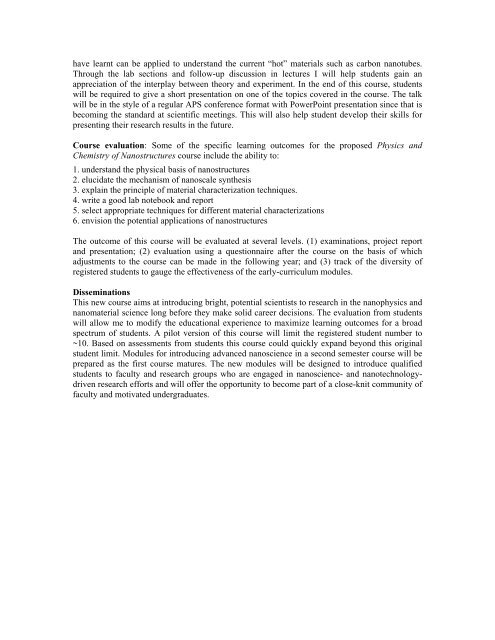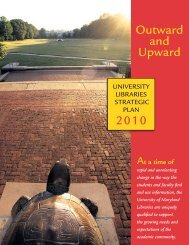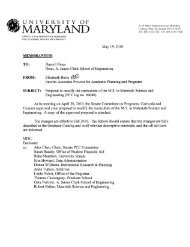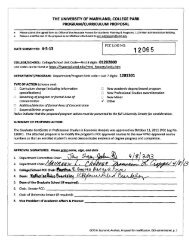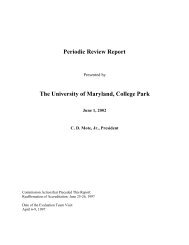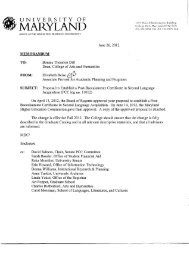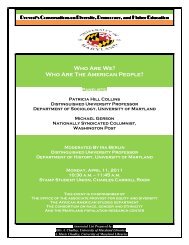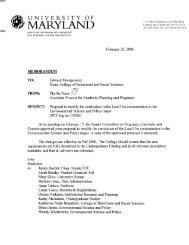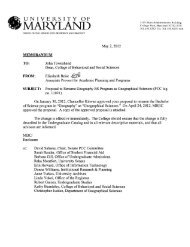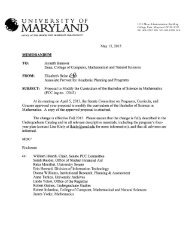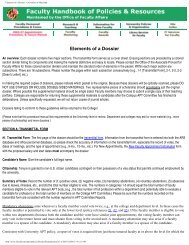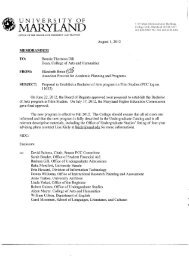05050 ENGR ENMA Add Minor in Nanoscience and Technology
05050 ENGR ENMA Add Minor in Nanoscience and Technology
05050 ENGR ENMA Add Minor in Nanoscience and Technology
You also want an ePaper? Increase the reach of your titles
YUMPU automatically turns print PDFs into web optimized ePapers that Google loves.
have learnt can be applied to underst<strong>and</strong> the current “hot” materials such as carbon nanotubes.<br />
Through the lab sections <strong>and</strong> follow-up discussion <strong>in</strong> lectures I will help students ga<strong>in</strong> an<br />
appreciation of the <strong>in</strong>terplay between theory <strong>and</strong> experiment. In the end of this course, students<br />
will be required to give a short presentation on one of the topics covered <strong>in</strong> the course. The talk<br />
will be <strong>in</strong> the style of a regular APS conference format with PowerPo<strong>in</strong>t presentation s<strong>in</strong>ce that is<br />
becom<strong>in</strong>g the st<strong>and</strong>ard at scientific meet<strong>in</strong>gs. This will also help student develop their skills for<br />
present<strong>in</strong>g their research results <strong>in</strong> the future.<br />
Course evaluation: Some of the specific learn<strong>in</strong>g outcomes for the proposed Physics <strong>and</strong><br />
Chemistry of Nanostructures course <strong>in</strong>clude the ability to:<br />
1. underst<strong>and</strong> the physical basis of nanostructures<br />
2. elucidate the mechanism of nanoscale synthesis<br />
3. expla<strong>in</strong> the pr<strong>in</strong>ciple of material characterization techniques.<br />
4. write a good lab notebook <strong>and</strong> report<br />
5. select appropriate techniques for different material characterizations<br />
6. envision the potential applications of nanostructures<br />
The outcome of this course will be evaluated at several levels. (1) exam<strong>in</strong>ations, project report<br />
<strong>and</strong> presentation; (2) evaluation us<strong>in</strong>g a questionnaire after the course on the basis of which<br />
adjustments to the course can be made <strong>in</strong> the follow<strong>in</strong>g year; <strong>and</strong> (3) track of the diversity of<br />
registered students to gauge the effectiveness of the early-curriculum modules.<br />
Dissem<strong>in</strong>ations<br />
This new course aims at <strong>in</strong>troduc<strong>in</strong>g bright, potential scientists to research <strong>in</strong> the nanophysics <strong>and</strong><br />
nanomaterial science long before they make solid career decisions. The evaluation from students<br />
will allow me to modify the educational experience to maximize learn<strong>in</strong>g outcomes for a broad<br />
spectrum of students. A pilot version of this course will limit the registered student number to<br />
~10. Based on assessments from students this course could quickly exp<strong>and</strong> beyond this orig<strong>in</strong>al<br />
student limit. Modules for <strong>in</strong>troduc<strong>in</strong>g advanced nanoscience <strong>in</strong> a second semester course will be<br />
prepared as the first course matures. The new modules will be designed to <strong>in</strong>troduce qualified<br />
students to faculty <strong>and</strong> research groups who are engaged <strong>in</strong> nanoscience- <strong>and</strong> nanotechnology-<br />
driven research efforts <strong>and</strong> will offer the opportunity to become part of a close-knit community of<br />
faculty <strong>and</strong> motivated undergraduates.


